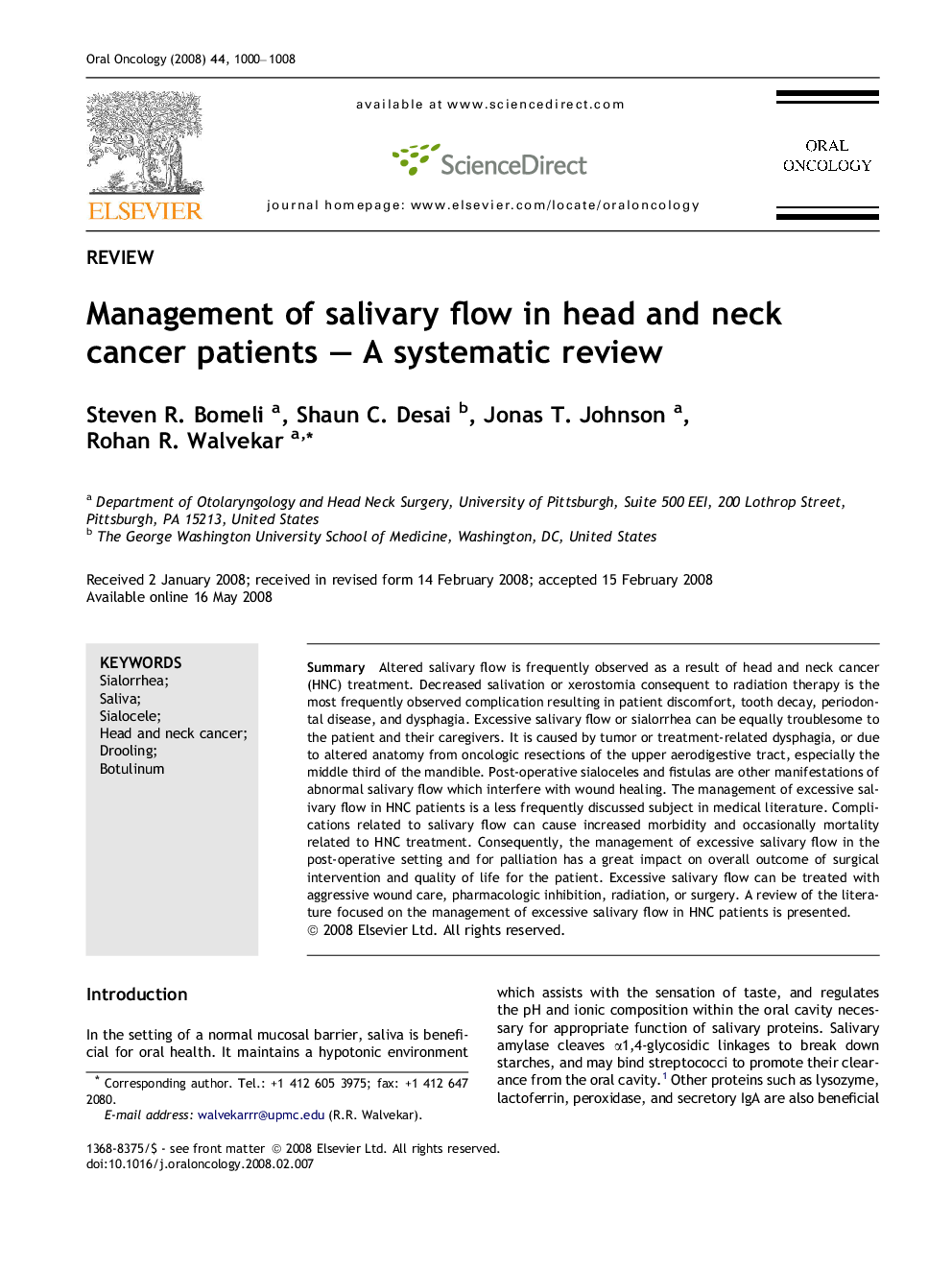| Article ID | Journal | Published Year | Pages | File Type |
|---|---|---|---|---|
| 3165491 | Oral Oncology | 2008 | 9 Pages |
SummaryAltered salivary flow is frequently observed as a result of head and neck cancer (HNC) treatment. Decreased salivation or xerostomia consequent to radiation therapy is the most frequently observed complication resulting in patient discomfort, tooth decay, periodontal disease, and dysphagia. Excessive salivary flow or sialorrhea can be equally troublesome to the patient and their caregivers. It is caused by tumor or treatment-related dysphagia, or due to altered anatomy from oncologic resections of the upper aerodigestive tract, especially the middle third of the mandible. Post-operative sialoceles and fistulas are other manifestations of abnormal salivary flow which interfere with wound healing. The management of excessive salivary flow in HNC patients is a less frequently discussed subject in medical literature. Complications related to salivary flow can cause increased morbidity and occasionally mortality related to HNC treatment. Consequently, the management of excessive salivary flow in the post-operative setting and for palliation has a great impact on overall outcome of surgical intervention and quality of life for the patient. Excessive salivary flow can be treated with aggressive wound care, pharmacologic inhibition, radiation, or surgery. A review of the literature focused on the management of excessive salivary flow in HNC patients is presented.
